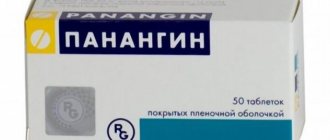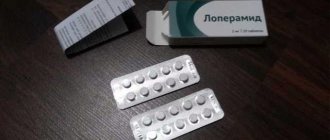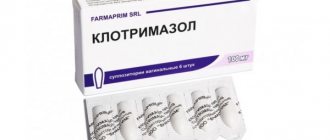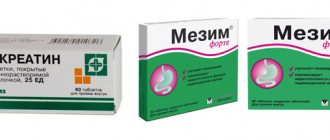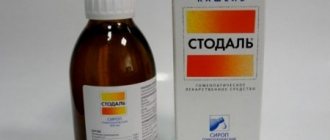Infectious diseases of the throat are common companions of pregnant women. To remove pathogenic bacteria from the mucous membranes of the nasopharyngeal cavity, local antiseptics are used, but not all of them are recommended during pregnancy. Chlorophyllipt, which is of natural origin, is an approved product for use, but independent use is still excluded. Only a doctor, after analyzing the condition of the mother and baby, can draw a conclusion about the admissibility of using the medication.
- 2 How does the medication work?
- 3 Release forms
3.1 Photo gallery: dosage forms of Chlorophyllipt
- 5.1 Alcohol solution
5.1.1 How to gargle correctly
- 7.1 Table: antiseptic drugs for the treatment of infections of the throat and nasal cavity, which the doctor can prescribe to the expectant mother
Can Chlorophyllipt be used by pregnant women?
According to the medical manual, the safety of Chlorophyllipt during pregnancy and breastfeeding has not been studied. However, many years of experience in treating throat diseases with the drug in expectant mothers allows us to conclude that it is harmless to the woman and the fetus, because:
- the product “works” only on the mucous membranes, without reaching the fetus through the general bloodstream;
- The medicine contains no synthetic components that are potentially dangerous to women and children.
Local use of the medication is permissible in any trimester of pregnancy, but before taking it, a pregnant woman should consult with her doctor . During gestation, hypersensitivity to drug components sometimes occurs.
Chlorophyllipt is allowed to be used topically during pregnancy, but only after consulting a doctor
When prescribing Chlorophyllipt, the doctor must evaluate:
- nature of pregnancy;
- individual characteristics of the female body (including intolerance to the components of the medication).
Thus, independent use of the drug during pregnancy is not recommended. Only the attending physician can prescribe Chlorophyllipt and only when the expected benefit outweighs the possible risk to the fetus. The scheme for applications, rinsing or any other use is also calculated by the doctor.
Is it possible to use Chlorophyllipt during pregnancy?
In the practice of safe treatment of pregnant women, Chlorophyllipt has been actively used for several years. This is a herbal preparation for the production of which raw materials from eucalyptus trees are processed. The product is notable for its powerful antimicrobial effect, so it is difficult to imagine complex treatment of most diseases of infectious and inflammatory origin without it. At the same time, Chlorophyllipt has virtually no contraindications.
No matter how harmless the drug may seem, independent use of Chlorophyllipt during pregnancy is not recommended. Before deciding on treatment tactics, the specialist will certainly examine the expectant mother and select a set of medications, taking into account:
- course and trimester of pregnancy;
- the general health of the patient;
- objective diagnosis.
The doctor prescribes chlorophyllipt to a pregnant woman, comparing the expected positive effect with the possible risk to her health. Local use of the medicine is allowed at any period of gestation, but oral administration is not practiced (only for gargling). Douching with Chlorophyllipt solution is also prohibited.
How does the medication work?
Chlorophyllipt is a natural medicine. Its active substance is chlorophyll types A and B, which is isolated from eucalyptus leaves. This component is a green pigment formed as a result of the photosynthesis reaction. Eucalyptus extract also contains the following substances:
- vitamins A, E, K;
- trace elements (zinc, selenium, molybdenum, etc.);
- phytoncides and tannins;
- Eucalyptus oil.
Thanks to this combination of active and auxiliary substances, the drug has a pronounced bactericidal effect . Chlorophyllipt is especially effective against staphylococci, but it is also used for diseases caused by pathogenic microbes such as:
- streptococci;
- tuberculosis bacillus;
- causative agent of dysentery;
- Trichomonas.
Eucalyptus extract contained in the drug reduces the inflammatory process, relieves swelling of the mucous membranes, and accelerates tissue regeneration. In addition, Chlorophyllipt acts as a local anesthetic, relieving pain in the throat.
What is Chlorophyllipt made from, the benefits of the drug
The medicine is created from plant materials; Chlorophyllipt is based on an extract from the leaves of globular eucalyptus, an evergreen tree of the myrtle family, growing in the tropics and subtropics. The elastic, fleshy foliage contains essential oil, which does not evaporate when the greens are properly dried. Due to the presence of a compound called cineole, as well as phytoncides and tannins, eucalyptus oil has an antimicrobial effect - it prevents the proliferation of bacteria, viruses, and fungi.
Eucalyptus leaves are rich in essential oil, which has medicinal properties.
Chlorophylls, the pigments that color foliage green, are also included in the fight against pathogenic microorganisms; a mixture of chlorophylls from globular eucalyptus suppresses the activity of staphylococci, which belong to the most dangerous and tenacious pathogens; They stop reproducing and then die. Not every synthetic antibiotic can cope with staphylococcus.
By the way, the pigments gave the drug its name - Chlorophyllipt.
Eucalyptus was brought to Europe in the second half of the 18th century as an ornamental plant, and later the healing properties of eucalyptus oil were discovered. The study of chlorophylls began in the century before last; by the middle of the 20th century, it was discovered that the substances successfully heal wounds; drugs with chlorophylls for the treatment of trophic ulcers appeared in pharmacies; and 40 years ago, two Soviet research institutes developed a plant antibiotic - Chlorophyllipt.
Nowadays the drug is used to:
- wounds and burns healed faster;
- prevent the development of sepsis - blood poisoning - after surgery;
- cure infections caused by staphylococcus;
- prevent the development of sore throat, ARVI;
- do not suffer from bronchitis, pneumonia and other respiratory tract infections;
- soften the signs of gastritis, cholecystitis (inflammation of the gallbladder), pyelonephritis (inflammation of the kidneys);
- cure pathologies of the genital organs - vaginitis, cervical erosion;
- fall asleep faster.
The instructions for the drug contain a clarification: to achieve results, Chlorophyllipt is usually combined with other medications.
How does the medicine help pregnant women?
After conception, the expectant mother’s immunity drops - this is how nature works so that the antibodies in a woman’s body do not harm the development of the embryo, which immune cells initially mistake for a foreign object, a potential threat. A decrease in immune defense leads to the fact that a pregnant woman becomes easy prey for pathogenic microbes; Therefore, pregnant women catch colds more easily and stay sick longer.
Use of chamomile during pregnancy:
And the choice for treatment is small: most antibiotics and antiviral drugs are contraindicated for expectant mothers, because the substances in the drugs can harm the development of the child.
However, respiratory tract infection received by a pregnant woman negatively affects the baby. It is not for nothing that the mucous membrane of the respiratory organs is called the “gate of infection” - once in the mouth, microbes populate the inner surface of the upper respiratory tract, multiplying intensively in a favorable environment. Cells are damaged, inflammation begins, which seizes the airways.
Acute infection in the mother is unsafe for the fetus; the baby is threatened:
- death in the womb - infection is especially dangerous in the 1st trimester, when there is still no placental shield, through which it is more difficult for microbes to get through to the fetus;
- intrauterine infection, which will slow down the development of the unborn child; the occurrence of defects in the fetus is not excluded;
- hypoxia - oxygen starvation; penetration of infection into the placenta leads to dysfunction of the temporary organ, the appearance of fetoplacental insufficiency - a pathology in which the placenta loses the ability to fully supply the baby with nutrients and oxygen.
To prevent the spread of infection, a woman is prescribed Chlorophyllipt; The drug will help with pain, sore throat, runny nose, and inflammation of the oral cavity. The product is designed to relieve symptoms:
- rhinitis (runny nose);
Pregnant women are often bothered by a runny nose, which Chlorophyllipt will help get rid of.
- pharyngitis - inflammation of the pharynx;
- laryngitis - inflammation of the larynx;
- tonsillitis - inflammation of the tonsils;
- bronchitis - an inflammatory process in the bronchi;
- stomatitis - lesions of the oral mucosa.
All these pathologies may turn out to be signs of the flu or another serious infection, which, of course, cannot be defeated with the help of Chlorophyllipt alone.
Release forms
On the pharmaceutical market, the medicine is presented in several dosage forms:
- spray;
- lozenges;
- oil solution for topical use;
- alcohol solution for topical use and oral administration;
- alcohol injection solution (not for use during pregnancy).
The drug is produced by different companies in Russia and Ukraine.
Photo gallery: dosage forms of Chlorophyllipt
An alcohol solution of Chlorophyllipt is diluted with water and used to gargle a sore throat.
Chlorophyllipt spray is practically not prescribed during pregnancy due to the alcohol content and the possibility of accidental ingestion
Chlorophyllipt oil solution is used in the treatment of mucous membranes
Chlorophyllipt solution for injection is not used during pregnancy
Chlorophyllipt tablets are used for angina only as directed and under the strict supervision of a physician.
During pregnancy, medications containing alcohol are used only externally and locally, always diluted with water. This also applies to the alcohol-containing solution of Chlorophyllipt. The most common form of the drug is allowed for pregnant women to use in diluted form .
The oil modification of the drug is used topically to lubricate the mucous membranes and skin. But the spray and tablet form, indicated for the treatment of throat infections, are rarely prescribed during pregnancy.
The fact is that gargling or irrigating the throat with Chlorophyllipt solution is still more harmless for the woman and the fetus, since, unlike the tablet form and spray, in this case the drug does not penetrate the body.
Chlorophyllipt solution during pregnancy: safe analogues
We will offer the most popular options for replacing Chlorophyllipt:
- Spray Kameton - in addition to the active substance chlorobutanol hemihydrate, the composition contains camphor, menthol and eucalyptus oil. Prescribed to pregnant women when the real benefits of treatment outweigh the potential risks.
- Hexoral rinse solution contains the antiseptic substance hexetidine. The only contraindication to the use of the drug by expectant mothers is an allergy to the components in its composition.
- Miramistin spray - the drug has a wide spectrum of antimicrobial action without penetrating into the systemic bloodstream. It is reliably known that the use of medicine for colds does not in any way affect the intrauterine development of the fetus.
Indications for use
A big plus of Chlorophyllipt is its high activity against varieties of pathogenic bacteria that have developed resistance to penicillin and other antibacterial drugs. The main indications for the use of this natural remedy are:
- diseases of the ENT organs: rhinitis;
- angina;
- laryngitis;
- pharyngitis;
- erysipelas;
- stomatitis;
- colpitis;
Despite the wide range of therapeutic effects of Chlorophyllipt, most often during pregnancy it is prescribed as an antiseptic for the treatment of infectious diseases of the respiratory tract.
Instructions for safe use
The variety and versatility of the forms of release of eucalyptus extract allows medical professionals to select the most effective type of medicine and the most effective methods of therapy in each individual case.
Alcohol solution
For infectious diseases of the pharynx, it is recommended to rinse with an alcohol-containing solution, previously diluted with boiled water in a ratio of 1 to 10 (10 ml of Chlorophyllipt per 100 ml of water). The procedure destroys pathogenic bacteria and flushes pus from the throat.
How to gargle correctly
When rinsing, the following rules should be observed:
- The prepared product must be used in one procedure, otherwise the solution will lose most of its beneficial properties.
- Rinse with Chlorophyllipt solution after meals. Then, in the next 30 minutes, you should not eat, otherwise the therapeutic effect will be negated.
- The duration of one procedure is 3–5 minutes. You need to tilt your head back a little; when rinsing, you should pronounce the sound “y” so that the tongue lies lower, providing free access to remote areas of the pharynx.
- The frequency of rinsing and duration of treatment is determined by the attending physician. It is usually recommended to perform the procedure 4–5 times a day.
Before use, the alcohol solution is diluted with boiled water.
In addition, in the complex treatment of infectious diseases of the respiratory tract, it is permissible, with the permission of a doctor, to use steam inhalations with the addition of a small amount of eucalyptus alcohol extract. The procedure moisturizes the bronchi, facilitates the release of sputum and destroys pathogens. Not to be confused with nebulizer inhalations: adding Chlorophyllipt to a compressor inhaler is prohibited!
Oil solution for the mucous membranes of the mouth and nose
A solution of Chlorophyllipt in oil is contraindicated for oral administration during pregnancy. Most often, the drug is used to treat inflamed tonsils and nasal cavity. The viscous consistency helps the product linger on the mucous membranes, avoiding being washed out by saliva and other secretions.
The method of using the oil solution is quite simple - soak a cotton swab with the product and lubricate the inflamed mucous membranes with it . After the procedure, you should not eat for 40–60 minutes. To facilitate nasal breathing, a few drops of the drug are instilled into each nostril. The product is also used to treat dental diseases, treating the gums and oral mucosa with it.
Chlorophyllipt will be effective only for bacterial rhinitis. Rhinitis due to viral infections and allergies is not treated with it.
In addition, for dermatological diseases, damage to the skin, inflammation of the external genitalia, it is permissible to use the drug in the form of compresses and cotton swabs.
Erosive damage to the uterine cervix, which is included in the list of indications for the use of an oil solution, is not always treated during pregnancy. Treatment for this disease is usually carried out after delivery.
Tablets and throat spray
Severe forms of infectious respiratory diseases require taking Chlorophyllipt orally, but during pregnancy it is extremely undesirable. The drug in tablets is not prohibited by medical instructions; however, it is prescribed only in cases where the probable benefit to the woman outweighs the possible risk to the child.
The spray is also not recommended for use by pregnant women, since it is a regular alcohol-containing solution, produced in a more convenient form - with a spray nozzle. When the pharyngeal mucosa is irrigated, the alcohol contained in its composition begins to be absorbed into the blood. This may adversely affect the development of the fetus.
Directions for use and dosage
The choice of dosage form of the drug and method of treatment depends on the diagnosis.
Chlorophyllipt solution during pregnancy for gargling
If the expectant mother was unable to avoid a cold, most often the doctor prescribes Chlorophyllipt in the form of an alcohol solution for gargling. This procedure destroys the accumulation of pathogenic microorganisms, relieves inflammation, removes pus, thereby cleansing the mucous membrane and promoting tissue regeneration.
How to gargle with maximum effect:
- the alcohol solution is diluted with warm boiled water at the rate of one teaspoon of the drug per 100–200 mg of liquid (unless a different dosage is recommended by the doctor);
- You need to prepare the rinse immediately before use, otherwise it may lose its medicinal properties;
- the procedure is carried out after a meal, and for 30 minutes after it you should refrain from eating and drinking;
- You need to gargle for 3-5 minutes 3-6 times a day, and the duration of treatment is from 3 to 10 days.
When gargling, the alcohol solution is diluted with water according to the instructions or recommendation of a doctor.
Oil solution for lubricating mucous membranes
The oil solution is suitable for treating the inflammatory process in the tonsils and nasal cavity. Due to its viscous consistency, the medicine is able to linger on the mucous membrane for quite a long time without being washed off by saliva. During the procedure, you need to treat the inflamed pharynx with a swab previously soaked in the drug. After this, you should not eat for 40–60 minutes.
Chlorophyllipt oil solution is instilled into the nose during pregnancy: 2-3 drops 2-4 times a day. This method can be replaced by placing gauze flagella soaked in the drug into the nasal passages for 20–30 minutes.
The official instructions for the oil solution do not describe how to use it to treat nasal mucous membranes. Nevertheless, doctors consider this method effective if all recommendations are followed, one of which is preliminary rinsing of the nasal cavity.
Spray and lozenges
Chlorophyllipt tablets and spray are not recommended during pregnancy. As a rule, doctors prescribe them only when the disease is severe and there is no more acceptable solution. From a safety point of view (side effects and risk of overdose), gargling is better suited during this period. The undesirability of using the spray also lies in the fact that the alcohol it contains is absorbed into the blood through the mucous membrane and can harm the development of the embryo.
Contraindications and side effects
An absolute limitation to the use of Chlorophyllipt is intolerance to the components of the drug. In addition, the medication is not recommended for use when:
- atrophic changes in the mucous membranes of the nose and pharynx;
- diabetes mellitus (this applies to tablets).
Eucalyptus extract interacts with other antiseptic medications, enhancing their effect . It is important for the doctor to take this into account when drawing up a complex treatment regimen that is safe for a pregnant woman.
When used together with hydrogen peroxide (treatment of skin diseases or burns), Chlorophyllipt precipitates. To avoid such a reaction, the wound is washed with sterile saline after applying peroxide and before treatment with Chlorophyllipt.
Side effects during drug therapy usually manifest themselves in the form of allergic reactions, which disappear after discontinuation of the drug:
- itching and rash on the skin;
- swelling of the oral mucosa;
- dry mucous membranes.
To prevent the occurrence of undesirable consequences, experts recommend checking the patient’s sensitivity to the components of the medication . To do this, apply a small amount of Chlorophyllipt solution to the skin. If after a few hours itching or redness does not appear, drug therapy is carried out according to the regimen recommended by the doctor.
Comments (4)
Julia
06/18/2017 at 23:33 |
I really like this solution. I treat both myself and my child’s throat with it. The taste is herbal and not cloying, you immediately feel relief and the pain goes away. So far I haven’t found anything better for myself.Answer
Anya
04/19/2018 at 01:55 pm |
Well, if you rinse every 3 hours and 5 minutes, then, judging by the numerous positive reviews about Chlorophyllipt for a sore throat, I think you can achieve good results and save on expensive medication treatment, especially since I no longer have a throat spray It helps, and the alcohol Chlorophyllipt is in the first aid kit.
Answer
Anna
07/27/2018 at 04:20 |
A fairly good drug, considering its low price, the effectiveness is excellent. It is important to use several times a day at a certain interval, then recovery will occur much faster. For me, Chlorophyllipt relieves the first most unpleasant symptoms of a cold and a sore throat.
Answer
Kate
07/30/2018 at 17:17 |
As I understand it, most of us mainly use an alcohol solution. But after reading about the oil Chlorophyllipt, I thought that it would probably more effectively prevent the progression of a sore throat to bronchitis (which often happens to me) if taken orally, as stated here.
Answer
What to replace
In case of hypersensitivity to the components of the drug, the doctor may replace Chlorophyllipt with another medication with a similar therapeutic effect. Analogs of the drug can be considered antiseptics for the complex treatment of infectious diseases of the upper respiratory tract. Each product has its own limitations and contraindications, so the question of replacing Chlorophyllipt should only be decided by the attending physician.
Table: antiseptic drugs for the treatment of infections of the throat and nasal cavity, which the doctor can prescribe to the expectant mother
| Name | Dosage forms | Active components | Indications | Contraindications | Features of use during pregnancy |
| Hexoral |
| Hexethidine |
| Hypersensitivity to the components of the drug | Prescribed if the expected benefit to the mother outweighs the possible risk to the fetus |
| Miramistin | Solution | Benzyldimethyl-myristoylamino-propylammonium chloride monohydrate |
| Use according to indications | |
| Stopangin |
|
|
|
| Contraindicated in the first trimester of pregnancy |
| Tantum Verde |
| Benzydamine hydrochloride |
|
| Use according to indications |
| Lysobacter | Lozenges |
|
|
| |
| Aqualor throat | Spray |
|
| Hypersensitivity to the components of the drug | |
| Pinosol | Drops |
|
|
|
Photo gallery: local antiseptics for rinsing and irrigating a sore throat and suckable tablets that are not contraindicated during pregnancy
Stopangin is a complex anti-inflammatory, antifungal and antimicrobial drug
Pinosol is a natural drug used in the treatment of chronic and acute bacterial rhinitis
Miramistin is a local broad-spectrum antiseptic approved for pregnant women.
Lizobact is a natural antiseptic drug that is safe for pregnant women at any stage
Hexoral is a local antiseptic drug used in dentistry and ENT practice.
Aqualor throat - a natural drug for the treatment of throat diseases
Tantum Verde has an antiseptic and analgesic effect
Reviews from women
Alcohol Chlorophyllipt helped me a lot during pregnancy.
In addition, immediately after rinsing, such a pleasant sensation - the pain was felt much less. I alternated it with salt + soda. Natalya https://www.babyblog.ru/community/post/living/3051929
During my pregnancy, I was plagued by colds, as a result of which my sinusitis and tonsillitis worsened.
And the doctor advised me to fight a sore throat with an oil solution of Chlorophyllipt. I heard about such a remedy for the first time, and why didn’t I know about it before?! Chlorophyllipt helped me a lot. The sore throat was completely cured in 4 days. Lilac Fox https://irecommend.ru/content/khlorofillipt-maslyanyi-instruktsiya-po-primeneniyu-dlya-detei-vzroslykh-i-kak-koaly-edyat-e
A long time ago, when my sister was pregnant, she was tormented by a cough, and the cough was strong and prolonged, but dry and did not bring relief.
It took a long time, about four months, I was treated with all the folk remedies I knew, but the cough did not go away. We always think: now we’ll gargle, drink some tea and that’s it – we’ll be healthy. As time passed and the pregnancy lengthened, and the cough caused more and more problems, I had to go to the ENT specialist and take a throat swab. The result is staphylococcus. And the ENT doctor prescribes an oil solution of Chlorophyllipt, and it’s just an inexpensive medicine, no injections, no tablets, just lubricate your throat 3 times a day. A four-month cough went away in 3 days!!! Vargana https://otzovik.com/review_954661.html
I haven't found anything better than Chlorophyllipt.
I tried it and didn’t regret it. I used both an alcohol solution (diluted a teaspoon in a glass of water several times a day) and an oil solution (dipped an ear stick in it and coated the pustules). Cured a sore throat in less than a week. And without any antibiotics! AstaNovik https://otzovik.com/review_2294017.html
I started using this drug out of desperation, since I couldn’t cure pharyngitis with anything, and not all medications can be used during pregnancy.
After one lubricant of the throat with an oil solution, improvements immediately appeared. Honestly, I didn't even expect it. It’s a pity that I didn’t know Chlorophyllipt earlier and suffered from constant sore throat. And most importantly - how simple it is! Yulia https://cc-t1.ru/preparaty/hlorofillipt.html
Drug with a “beard”
“Chlorophyllipt” is a rather “old” drug that is loved by pediatricians, ENT specialists, gynecologists, dermatologists and even gastroenterologists.
It is produced on the basis of eucalyptus extract in several dosage forms: these are ampoules, aqueous and oily solutions, alcoholic solutions, and tablets. He fell in love due to his antibacterial properties against staphylococci of various strains.
It is used for the treatment of wounds complicated by purulent infections, postoperative treatment of sutures in the postpartum period, for burns, as well as for washing trophic wounds.
In addition, ampoules are used to treat pneumonia complicated by purulent infection, osteomyelitis and even tuberculosis. This form is used much less frequently than aqueous and oil solutions, so it is much more difficult to find in pharmacies.
For diseases of the mouth, throat, and nose, it is possible to use an aqueous solution in the form of a spray with a convenient nozzle. The sprayer has a compact spout, well suited for both irrigating the throat and spraying into the nose.
Solutions are an excellent means for rinsing, applications, baths, tampons and douching, enemas for inflammatory processes of the pelvic organs, diseases of the oral cavity, deep wounds and postoperative care.

